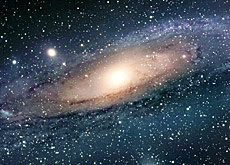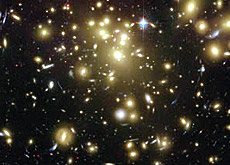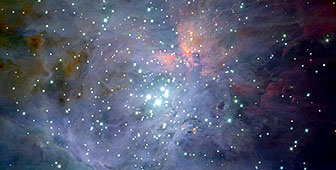Astronomers map stars in Milky Way

An international team of astronomers has mapped the movement of stars in the Milky Way - a move which could improve understanding of our galaxy.
The results of the study by the Swiss, Danish and Swedish team are the culmination of 15 years of work, including more than 1,000 nights of observing more than 14,000 stars.
Birgitta Nordstrom of Denmark’s Niels Bohr Institute, the leader of the research team, said the data not only showed the history of stellar movement in the Milky Way, but it would also enable scientists to look into the future of our universe.
“We now know where the stars came from and we can also predict where they’ll go,” said Nordstrom.
The research – published in the journal, “Astronomy and Astrophysics” – shows that the Milky Way galaxy was much more turbulent and chaotic than scientists had assumed.
The team’s initial analysis reveals that objects like molecular clouds, spiral arms and black holes have stirred up the motion of the stars throughout the entire history of the Milky Way disc.
This in turn reveals that the evolution of the Milky Way was far more complex and chaotic than traditional, simplified models have so far assumed.
Galaxy collisions
Supernova explosions, galaxy collisions and the collapse of huge gas clouds have made the Milky Way a very lively place indeed.
“We had a confirmation that younger stars are very rich in heavy elements,” said Michel Mayor, director of the Geneva observatory.
“Moreover, the gases from which they are formed have been polluted by the remnants of explosions of stars which existed previously.”
“We’re also convinced now that a big galaxy finishes by swallowing the small ones which orbit around them.”
The Milky Way galaxy, which holds billions of stars and is home to our solar system, also houses stars travelling more than 300 kilometres (186.4 miles) per second.
Stars travelling at such extreme speeds would be an area of further research for the international team, according to Nordstrom.
The study will also provide information for another relatively new area of research: the search for planets outside our solar system.
swissinfo with agencies
The European Southern Observatory (ESO) is an intergovernmental European organisation for astronomical research.
It has conducted a detailed study of the changing dynamics of the Milky Way since its birth.
This has involved 15 years of work, including more than 1,000 nights of observing more than 14,000 stars.
The research shows that the Milky Way galaxy was much more turbulent and chaotic than scientists had assumed.

In compliance with the JTI standards
More: SWI swissinfo.ch certified by the Journalism Trust Initiative


You can find an overview of ongoing debates with our journalists here. Please join us!
If you want to start a conversation about a topic raised in this article or want to report factual errors, email us at english@swissinfo.ch.